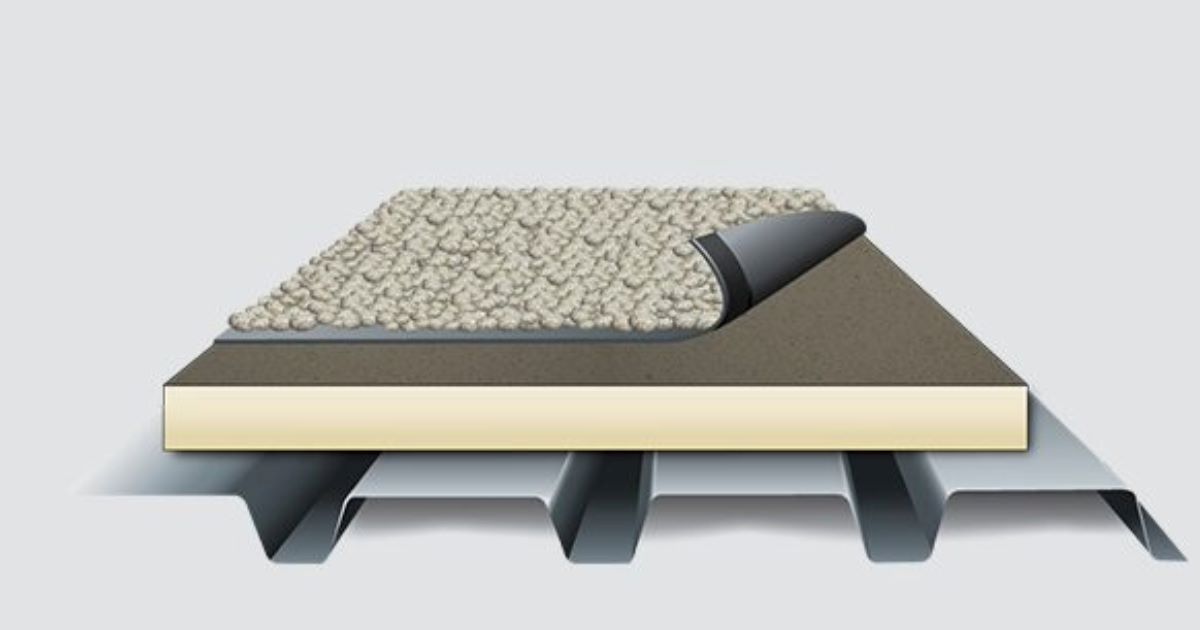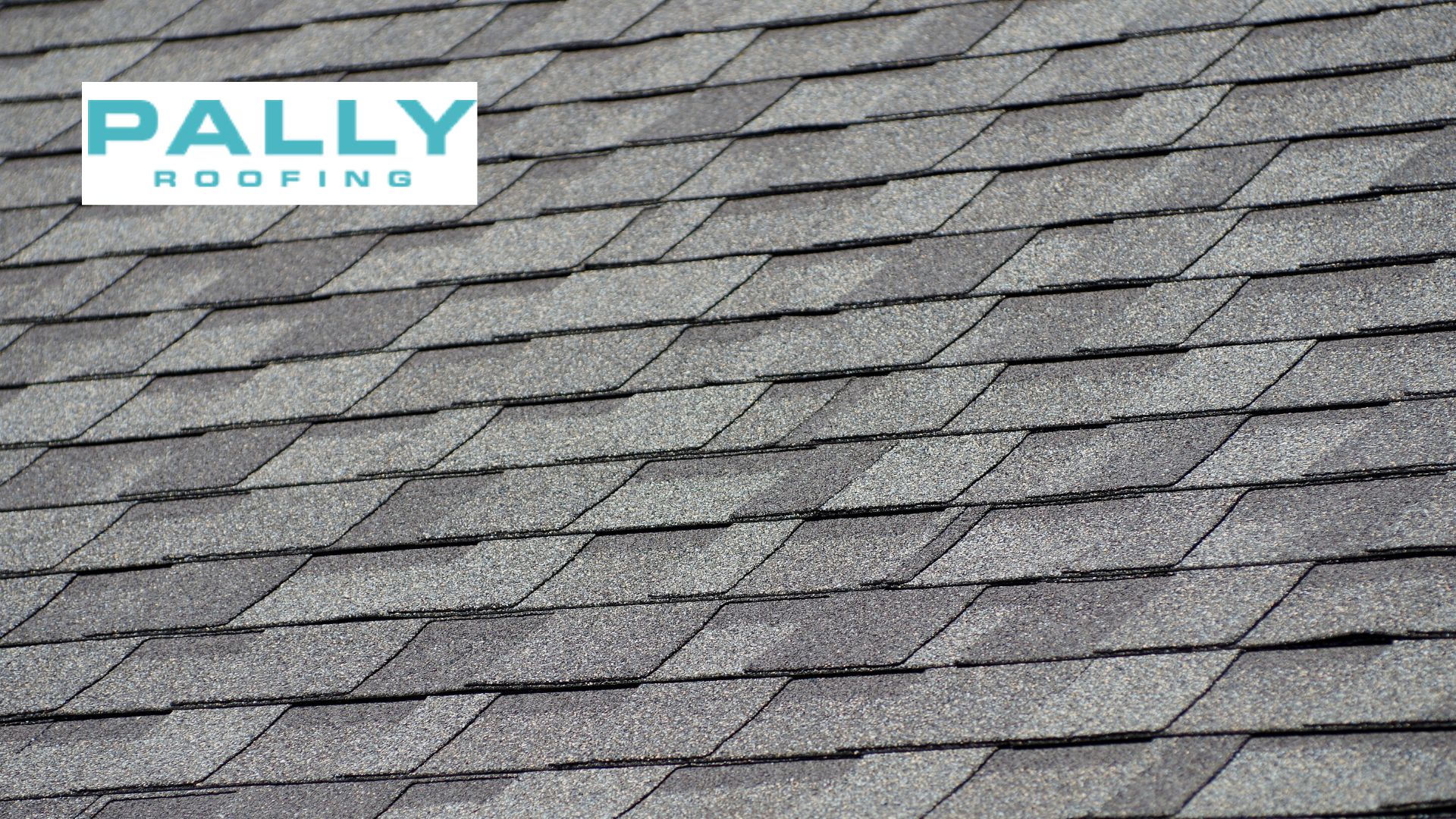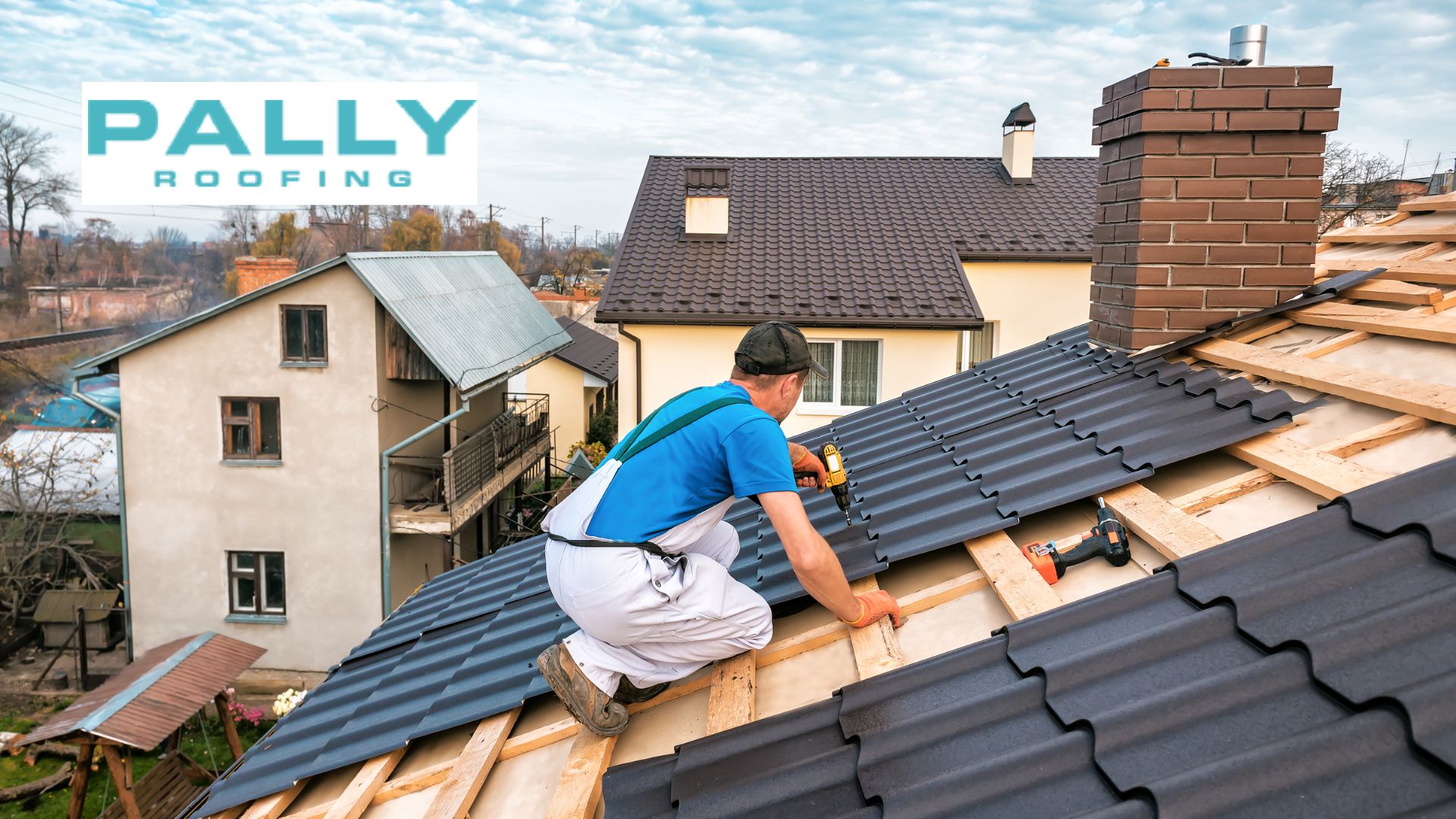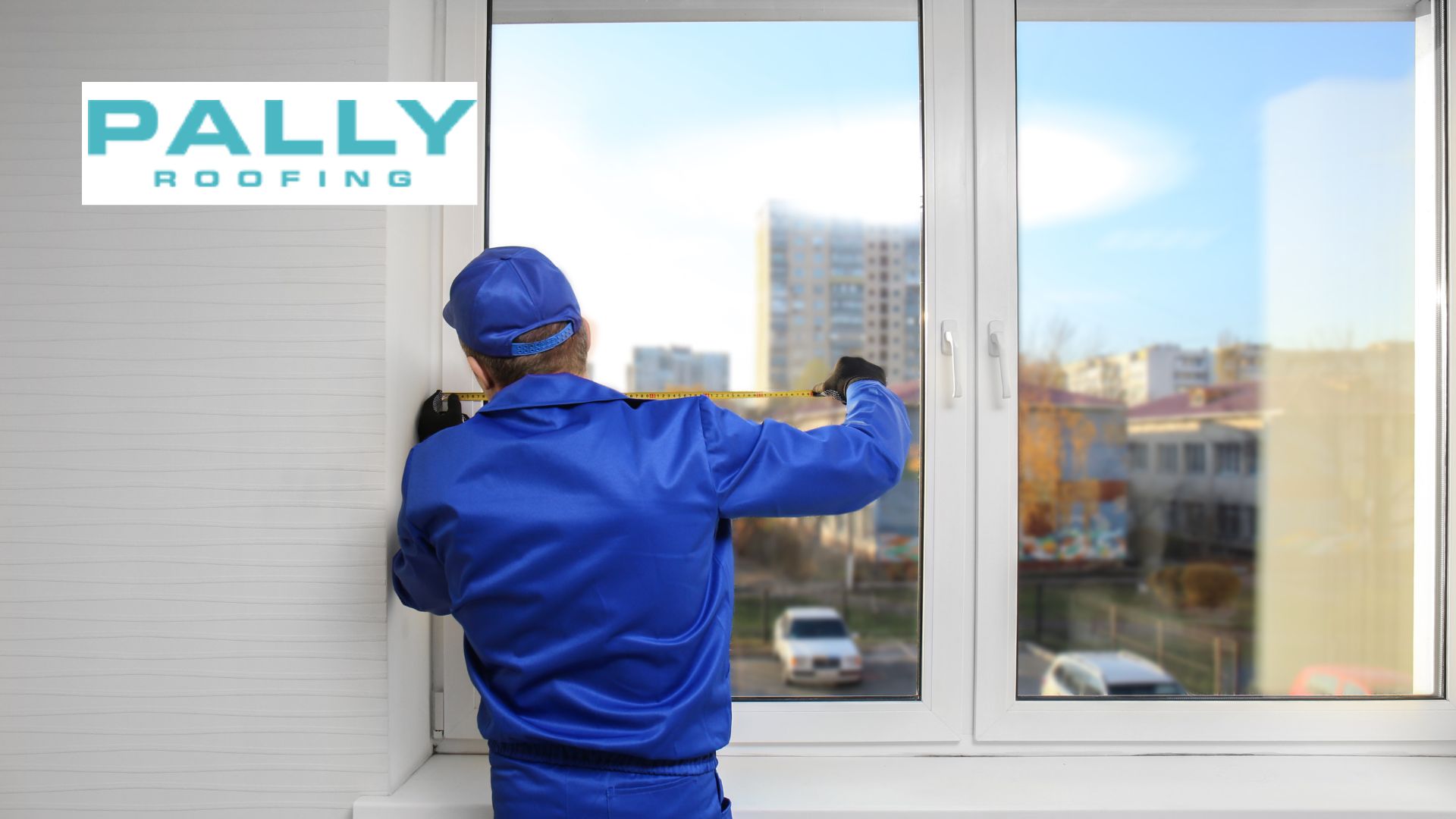Vinyl roofing stands out for its durability and low maintenance requirements compared to traditional materials like asphalt shingles. Unlike asphalt, which may need frequent repairs and replacement, vinyl roofing maintains its appearance and functionality with minimal upkeep. Its superior resistance to water and heat reduces the risk of leaks and damage, ultimately saving homeowners and businesses money on repairs and energy bills.
Pally Roofing is committed to providing top-notch roofing solutions tailored to your needs. Whether you’re considering vinyl roofing or any other material, we offer expert services, including Full Roof Replacements and Roofing Repairs. Our team ensures your roof is in optimal condition, enhancing its longevity and performance.
Table of Contents
What is Vinyl Roofing?
Definition and Composition
Vinyl roofing is a durable and weather-resistant material primarily composed of polyvinyl chloride (PVC) or thermoplastic olefin (TPO). PVC is known for its excellent resistance to chemicals, moisture, and UV radiation, making it a popular choice for commercial buildings. TPO, on the other hand, offers a more cost-effective option with similar benefits, including heat reflectivity and energy efficiency. Both materials are designed to withstand harsh environmental conditions and provide long-lasting protection for various buildings.
Types of Vinyl Roofing
- Single-Ply Membranes: This is the most common form of vinyl roofing, consisting of a single layer of roofing material applied over a prepared surface. It is known for its flexibility, ease of installation, and resistance to water and chemicals. Single-ply membranes are ideal for flat or low-slope roofs.
- Vinyl-Coated Metal: This type combines the strength of metal with a vinyl coating that enhances durability and weather resistance. It offers additional protection against corrosion and can be used for residential and commercial applications, providing a sturdy, low-maintenance roofing solution.
Advantages of Vinyl Roofing
- Durability and Longevity
Vinyl roofing is renowned for its exceptional durability and long lifespan. Depending on the specific material and installation, it can last 20-30 years or more. Its resistance to harsh weather conditions, including heavy rain, snow, and UV rays, helps prevent common roofing issues such as cracking and fading, ensuring long-term performance.
- Low Maintenance
One key benefit of vinyl roofing is its low maintenance requirements. Unlike traditional roofing materials, vinyl does not require regular treatments or coatings to maintain its appearance. It is also resistant to mold, algae, and dirt buildup, making it easier to clean and maintain.
- Energy Efficiency
Vinyl roofing contributes to energy savings through its reflective properties. The material’s ability to reflect UV rays reduces heat absorption, which helps keep buildings more relaxed in the summer. This can lead to lower air conditioning costs and improved overall energy efficiency.
- Cost-Effectiveness
While the initial cost of vinyl roofing can be higher than that of some traditional materials, its long-term savings are significant. Its durability and low maintenance requirements reduce the need for frequent repairs or replacements, making it a cost-effective choice over the roof’s lifespan. Additionally, its energy efficiency can result in reduced utility bills, further enhancing its value.
Applications of Vinyl Roofing
- Residential Use
Vinyl roofing is an excellent choice for residential applications due to its durability and aesthetic appeal. It is particularly effective on flat or low-slope roofs, providing a sleek, modern look while protecting against leaks and weather damage. Its low maintenance requirements and resistance to mold and algae make it a practical option for homeowners seeking a long-lasting and attractive roofing solution.
- Commercial Use
Vinyl roofing offers significant advantages for commercial and industrial buildings, including superior resistance to harsh weather conditions and chemicals. Its durability makes it ideal for flat or low-slope commercial roofs, where it can withstand foot traffic and mechanical equipment. Additionally, its energy-efficient properties help reduce cooling costs, making it a cost-effective solution for large-scale applications.
Comparing Vinyl Roofing to Other Materials
Vinyl vs. Asphalt Shingles
- Pros: Vinyl roofing offers more excellent durability and longevity than asphalt shingles, with a lifespan of 20-30 years versus 15-20 years. It is also more resistant to water, UV rays, and mold and requires less maintenance. Additionally, vinyl’s reflective properties contribute to better energy efficiency.
- Cons: Vinyl roofing typically costs more upfront than asphalt shingles. However, the long-term savings in maintenance and energy costs can offset this initial investment.
Vinyl vs. Metal Roofing
- Durability: Both vinyl and metal roofing are highly durable, but metal roofing generally offers superior strength and longevity. Metal roofs can last 40-70 years, while vinyl roofs typically last 20-30 years.
- Cost: Vinyl roofing is usually less expensive than metal roofing in terms of material and installation costs. However, metal roofing may provide better long-term value due to its longer lifespan and resilience.
- Maintenance: Vinyl roofing is low-maintenance and resistant to issues such as rust and corrosion, which can affect metal roofs over time. Metal roofs require periodic inspections and maintenance to address potential rust and damage.
Cost Analysis
Initial Costs
The initial costs of vinyl roofing include the price of materials and installation. On average, vinyl roofing materials range from $2 to $5 per square foot, with installation costs adding $1 to $3 per square foot. This puts the total initial cost of vinyl roofing between $3 and $8 per square foot, depending on roof size, complexity, and geographic location.
Long-Term Costs
While vinyl roofing may cost more upfront than some materials, it offers significant long-term savings. Its low maintenance requirements reduce ongoing expenses, as vinyl roofs do not need frequent repairs or replacements.
Additionally, vinyl roofing’s energy-efficient properties can lead to lower cooling costs, further contributing to overall savings. Over its lifespan, the durability and minimal upkeep of vinyl roofing can result in lower total costs compared to other roofing materials.
Conclusion
Vinyl roofing is a durable, low-maintenance, and energy-efficient solution that offers long-lasting protection for residential and commercial properties. Its resistance to harsh weather, minimal upkeep requirements, and energy-saving benefits make it a cost-effective choice. Compared to asphalt shingles and metal roofing, vinyl provides a balanced cost, performance, and maintenance option.
If you’re considering roof installation for your home or business, Pally Roofing is here to help. Contact us today for more information or to receive a personalized quote. Let our experts guide you in choosing the best roofing solution to meet your needs and budget.
References:
Author
-

With more than 16 years of hands-on experience, Phillip Schmucker is the knowledgeable owner of Pally Roofing. His dedication to superior roofing services has earned him a reputable place in the industry. Phillip also shares his extensive expertise through writing, providing readers with practical tips and professional advice on various roofing topics. Follow him on LinkedIn.
View all posts









